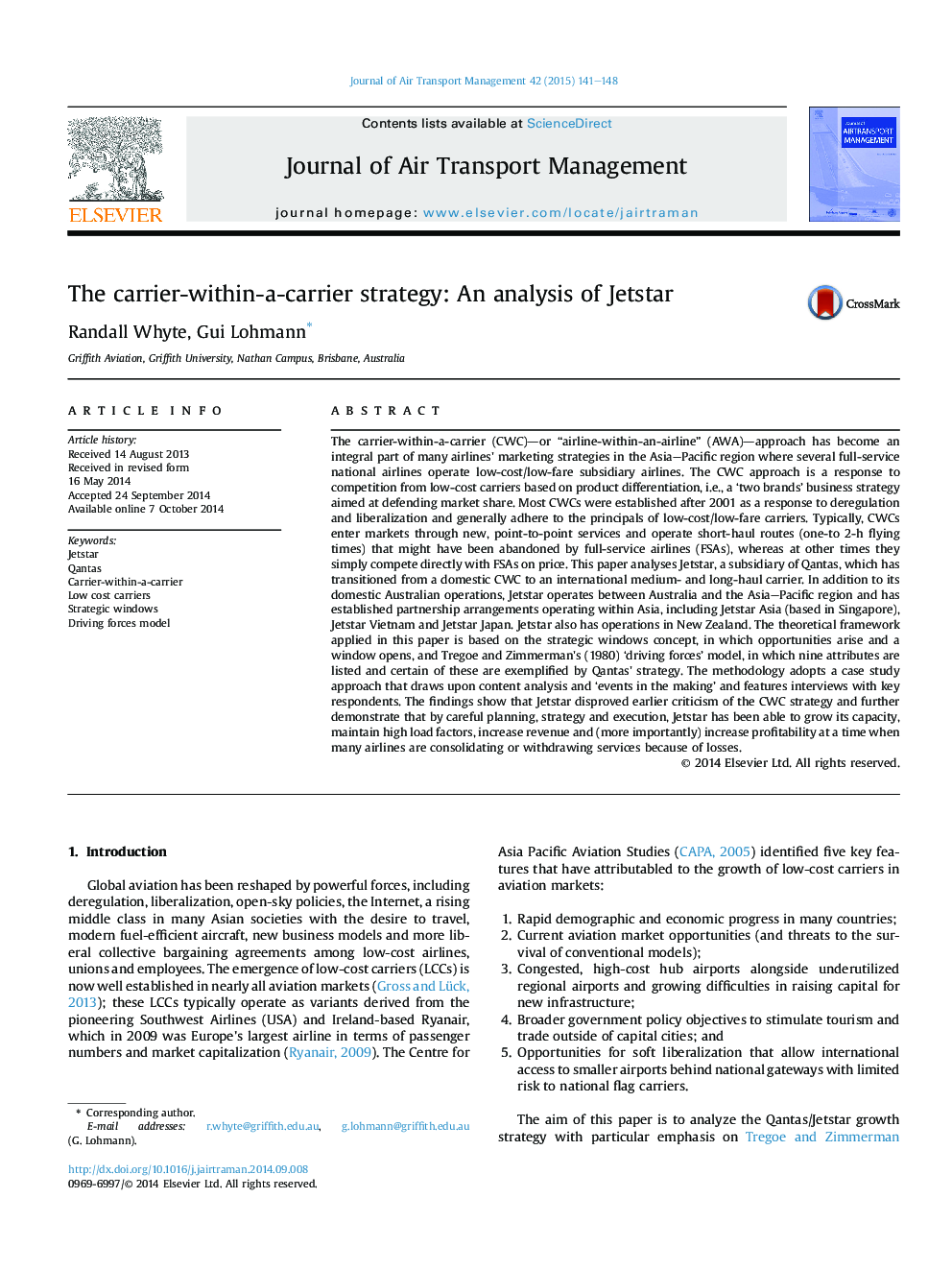| کد مقاله | کد نشریه | سال انتشار | مقاله انگلیسی | نسخه تمام متن |
|---|---|---|---|---|
| 1030816 | 1483575 | 2015 | 8 صفحه PDF | دانلود رایگان |

• Long-haul routes posed more operational issues for Jetstar than medium-haul routes.
• Qantas would have to rely more on Jetstar for its growth of market share.
• Jetstar has achieved outstanding results in capacity, number of passengers carried and RPK.
The carrier-within-a-carrier (CWC)—or “airline-within-an-airline” (AWA)—approach has become an integral part of many airlines' marketing strategies in the Asia–Pacific region where several full-service national airlines operate low-cost/low-fare subsidiary airlines. The CWC approach is a response to competition from low-cost carriers based on product differentiation, i.e., a ‘two brands’ business strategy aimed at defending market share. Most CWCs were established after 2001 as a response to deregulation and liberalization and generally adhere to the principals of low-cost/low-fare carriers. Typically, CWCs enter markets through new, point-to-point services and operate short-haul routes (one-to 2-h flying times) that might have been abandoned by full-service airlines (FSAs), whereas at other times they simply compete directly with FSAs on price. This paper analyses Jetstar, a subsidiary of Qantas, which has transitioned from a domestic CWC to an international medium- and long-haul carrier. In addition to its domestic Australian operations, Jetstar operates between Australia and the Asia–Pacific region and has established partnership arrangements operating within Asia, including Jetstar Asia (based in Singapore), Jetstar Vietnam and Jetstar Japan. Jetstar also has operations in New Zealand. The theoretical framework applied in this paper is based on the strategic windows concept, in which opportunities arise and a window opens, and Tregoe and Zimmerman's (1980) ‘driving forces’ model, in which nine attributes are listed and certain of these are exemplified by Qantas' strategy. The methodology adopts a case study approach that draws upon content analysis and ‘events in the making’ and features interviews with key respondents. The findings show that Jetstar disproved earlier criticism of the CWC strategy and further demonstrate that by careful planning, strategy and execution, Jetstar has been able to grow its capacity, maintain high load factors, increase revenue and (more importantly) increase profitability at a time when many airlines are consolidating or withdrawing services because of losses.
Journal: Journal of Air Transport Management - Volume 42, January 2015, Pages 141–148